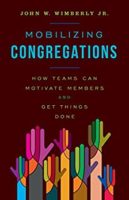
Once the COVID-19 crisis is behind us, I am convinced that more will remain the same than change in congregational life. People have gathered to worship, study, and support each other for centuries in the Christian, Muslim, Jewish, Hindu, and other religious traditions. Congregations have continued their core practices through pandemics, depressions, and wars. After each time of travail, more stayed the same than changed. History tells us to be careful when predicting cosmic change for congregations, even with something as huge as COVID.
That being said, I am pretty sure one thing will change for a lot of congregations. Many will hold meetings virtually rather than asking people to drive to the facilities to meet face-to-face. Especially in urban communities, getting to and from a meeting is a major time commitment. For many people in the 21st century, time is more valuable than money. Without the commute, a meeting makes much more efficient use of congregants’ time.
Low touch
Some people maintain that a virtual meeting cannot capture the interpersonal dynamics of an in-person meeting. Ten years ago, I would have agreed. Now—after years of doing various types of consulting work virtually and participating in too many virtual meetings to count—I disagree.
Yes, we cannot touch, hug or otherwise physically engage with people in a virtual meeting. That is no small loss, especially for people who need a hug. We also lose the “parking lot conversations” before and after the meeting, although a quick phone call can fill that gap. As congregations hold more meetings virtually, intentional planning to bring people together physically will be essential. But for almost every purpose face-to-face meetings accomplish, virtual meetings can do the same: Decisions are made. Plans are laid. Performance is evaluated.
Leading virtual meetings is a skill, as clearly as leading a face-to-face meeting. Fortunately, there are thousands of good articles online about the skills for leading effective virtual meetings. Since many in the business world mastered the art of virtual meetings long ago, The Harvard Business Review, not surprisingly, has helpful articles on this topic. One of them, Keith Ferrazzi’s “How to Run a Great Virtual Meeting,” is a particularly good read. The author details the ins and outs of leading virtual meetings. I like his attention to what needs to happen before, during and after each meeting.
Break out!
One thing Ferrazzi misses is the value of using breakout rooms in Zoom and other videoconference systems. Given the chance, extroverts will dominate any meeting. I know: I am an extrovert and must restrain this inborn tendency. Introverts are far more likely to talk in small groups. Virtual meetings are no different. Using breakout rooms, we can create small groups where introverts thrive. When everyone returns to the main meeting, the extroverts can resume their attempts to dominate!
The “chat” feature allows participants to flesh out an idea before sharing it with the total group. Obviously, they can also use it to complain about the group. However, I have seen too many people doing that in face-to-face meetings with text message exchanges.
The “raise hand” feature helps to create more disciplined conversations. I am on the board of an organization known for contentious meetings. Having been forced to conduct meetings virtually, we now must click “raise hand” to be recognized. This has largely prevented our aggressive members from interrupting or talking over others. When we return to face-to-face meetings, it will be interesting to see if our board establishes and follows new, virtually-born norms for debate.
Virtual meetings also have the potential to make teams, committees, and boards more inclusive. In many congregations, it is difficult to get members with young children to participate in programs or governance. Many seniors do not want to go out at night for meetings. Allowing younger and older members to participate virtually from home greatly increases the likelihood that they will take part in meetings.
Back to “normal”?
When we emerge from the COVID crisis, wise boards will discuss what they have learned from using virtual meetings. Do they want to continue using them? If not, why not? If yes, should they go virtual with all meetings or allow each team, committee, and board to decide for itself? What meeting software should the congregation use? Should there be training on the software available to all members? What should be done for members who don’t have the technology at home for virtual meetings?
Once the crisis passes, there will be face-to-face meetings once again. I am betting, though, they will no longer be the default option.
One thing I know for sure: congregations will continue doing the core work, worship, and study they have done for centuries, because nothing can stop them.
John Wimberly is an experienced pastor and consultant. As a consultant, he has worked with congregations and judicatories on strategic planning, staff designs for the 21st century, and congregational growth as well as financial and administrative management. He has MBA, MDiv, and PhD (theology) degrees. His books focus on effective management and leadership. John believes congregations can have a bright future!



